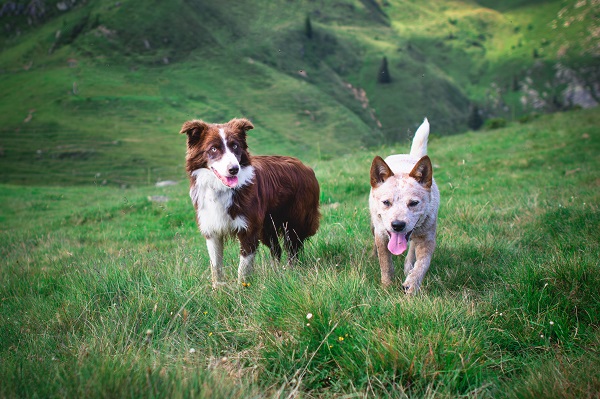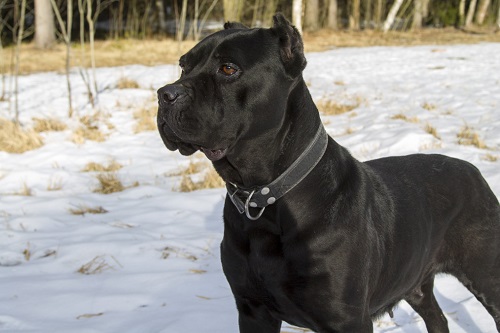Dog communication is interesting to know and understand, especially if you are a dog lover or dog parent. While humans communicate verbally, dogs do so non-verbally, intrinsically indicating their state of mind.
Whenever we humans think of how dogs communicate with one another, the maximum we can think of is vocalizations such as growls, whines, and barks that are most apparent. Hence, barking and growling sounds seem to come to our minds, especially when describing dog communication.
However, barking and growling represent a portion of the regular communication repertoire of a dog. And, mind you, it is as rich as it gets.
As far as experts go, it can be blamed on the error-laden emphasis that we put on the natural tendencies of our species. As far as humans are concerned, verbal communication reigns supreme. However, when it comes to our furballs, more goes in. That includes their scent cues and body language to be more precise about ways dogs communicate.
The importance of communication
Before we delve deeper into the content of dogs’ communication, we must understand its role. All the communication dogs have must be viewed in which it is being done.
It is the environment in which the dogs communicate with each other. It applies to the communications that dogs have with humans and humans with others of their ilk. For example, we would not want a dog to run and greet a baby.
How do dogs communicate with each other?
Experts say that when dogs communicate with each other. They use their senses. Smell, sight, and sound are the most significant factors in dog communication.
Hence, all these senses help them deliver the message they are trying to convey to their immediate surroundings. Humans can communicate through scent, but dog noses are at another level altogether.
In comparison to humans with six million olfactory receptors in their noses, dogs have 300 million! Therefore, their sense of smell is supposed to be anywhere between 10,000 and 100,000 times more acute than ours!
You may not be capable of picking up the pheromones of a dog, but you can still see and hear their vocalizations show through their gestures, such as the following:
- barking
- whining
- growling
- Sighing
- Howling
- whimpering
Use these and try to decipher what they are trying to communicate. You can similarly use their body language, such as discussed below. It will help you to understand what they may be speaking to other dogs:
- posture
- position of tail and ear
- eye contact
You would have to keep these in mind because knowing about them is an important aspect.
What is your dog trying to tell you through their body language?
Veterinary experts have categorized canine communication into five major categories such as the following:
- relaxed
- aroused
- afraid
- anxious
- aggressive
If your dog seems content and relaxed, it will likely lounge around, and the body posture will be loose. Their mouths would be flexible and open.
The appearance will resemble a soft smile. In such a situation, their ears would be neutral, and their tails could wag, showing their comfort and contentment.
There are two main reasons your dog could be excited or aroused – something they like, such as their canine friends, or something they do not like, such as a canine foe.
If the stimulus is positive, they will show attention-seeking behavior, sometimes appeasement. It could include any or all of the following:
- jumping
- play bowing
- tail wagging
- licking
- nuzzling
- barking
- pawing
If your dog is afraid, it will openly show submissive body language. As far as communication between dogs is concerned, experts say that the dog who is being submissive would carry their tail between its legs, lower their bodies, and pull back its ears. At times, they may expose their undersides to the dog or dogs that they are afraid of.
Experts say that dogs exhibit aggressive body language to protect themselves offensively. Hence, it is a strategy they take in these situations.
Signs of anxiety and discomfort
If your dog is out of their comfort zone in a given situation, they might try to avoid that. Experts say they may try to walk or run away in such a situation. They may attempt to hide. They may keep their ears flat and close their eyes.
They would also try to look small and tuck their tail between their legs. They might come to you for support and could hide behind your legs. However, experts also say that the dogs attempt to bluff their way out of uncomfortable situations.
Now, anxiety in dogs is similar to how they behave when afraid, but there is no discreet stimulus in such instances. When your dog is anxious about anything, the signs appear, anticipating a threat rather than experiencing it.
What do different dog postures mean?
There is a position named in yoga after dogs – downward dog. In this case, their butt would be in the air. Their front legs and chest would be stretched in the front. When you see your dog doing it, that usually means they are getting ready for playtime.
So, you have to go and get that frisbee. If they are licking their lips and noses during mealtime or afterward, it means dogs are grooming themselves. Otherwise, it is a sign they are anxious, afraid, or cautious.
What can you understand from their tails?
There are some general tail motions of your dog. So, you would do well to keep that in mind. If their tail seems curled, it means that they are relaxed.
It means they are being confident or trying to assert their dominance. If their seats appear stiff and straight, your furball may be tracking someone or something.
Suppose their tails seem tucked in or held lower, indicating their state of mind. It may be afraid and submissive. The thing with seats is that it is the prominent part of their body to observe.
Conflict-related behavior by dogs
A dog behaves conflicted when they are in that state of mind. In such cases, they may also be experiencing competing motivations. Perhaps, they may want to be close to their human parents but are afraid of the child on their laps.
A dog could also feel when they perceive a situation as being aggressive or unable to predict what will happen immediately afterward. In that case, they may feel like remaining over there as well as retreating at the same time.
Conclusion
Canine communication can be a complex set of systems comprising body language, scent cues, visual cues, and vocalization, to name a few. These signals reinforce the position that a dog enjoys in their society.
Dogs tend to be flexible with the members who belong to their family group. That is why it is so significant that you start socializing a dog when they are a pup. Continue this throughout their lives.
Your dog would consider you and the other people in the household, including the pets, part of their family group. Maintain eye contact with your dog, as it is a significant way dogs communicate with humans.
FAQs
Q: How do dogs communicate with each other?
A: There are various ways in which dogs communicate with each other such as the following:
- pheromones
- glandular secretions
- barks
- whines
- yelps
- growls
- body postures
All these can be an effective means of communication between dogs.
Q: Do dogs communicate with words?
A: Dogs are much like babies. Hence, dogs do communicate with us orally despite having a limited vocabulary. They might not be verbal creatures, but they manage to speak to us in many ways.
Q: How much do dogs communicate with each other?
A: Dogs communicate with other dogs. Studies have shown that dogs have thousands of unique barks to communicate with each other! Barks differ in volume and pitch and indicate their state of mind to other dogs.
Q: How do dogs communicate orally?
A: Dog vocalization, referred to as auditory communication, includes the following:
- barks
- growls
- howls
- whines
- whimpers
- screams
- pants
- sighs
They also communicate with each other by way of pheromones and scents.
Q: Can dogs communicate with and understand each other?
A: Yes, they indeed can. They have ways of communicating with each other and understanding them. They use these systems for conflict resolution too!
 DogExpress
DogExpress





















 in Chandigarh, India.
in Chandigarh, India. 

